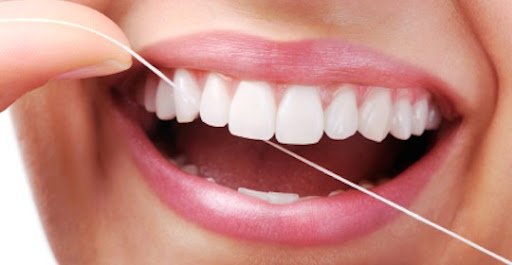
Flossing: Dr. Éléna Bensoussan tells you everything you need to know
“When performing a first visit, one of the things on which I like to focus is the patient’s dental hygiene practice.” Indeed, Dr. Elena Bensoussan finds that preventing gum disease and caries development is at the core of preventive dentistry.
We’ve all been taught to brush our teeth after each meal, but what about flossing? How come it is not anchored in our dental hygiene daily practice?
How to correctly brush the teeth?
First, you should brush your teeth using an electric toothbrush and positioning the head of the brush at a 45° angle from the tooth and making a gum to tooth movement. This should be done on both faces of every tooth.
Then, flossing allows removing dirt stuck between teeth, somewhere that even the most advanced toothbrush can’t reach. It also helps keep your gum strong. Do you see the blood after you brush? Well, flossing prevents that.
How to correctly floss your teeth?
If flossed is incorrectly used, it can lacerate your gums causing discomfort and possibly more bleeding. That leads to the other problem, it is hard to use.
Place the floss in between two teeth by rubbing it along the side of the tooth and make sure not to snap it down. Polish one side of the tooth and then the one next to it. As it reaches the gums, make sure it follows the curvature of your tooth and goes in between the gum and the tooth. Perform gentle movements and make sure not to irritate the gums located between each tooth.
This should be done on a daily basis. We recommend doing it after you brush at night and followed by your daily mouthwash.
Dr Elena Bensoussan, one of our English-speaking dentists in Barcelona:
She graduated in 2015 with a Bachelor in Biology from the University of Miami and then pursued her dental career at the Universitat Internacional de Catalunya in which she obtained both a Master’s degree in Research as well as a Bachelor’s degree in Dentistry.
Today, she explains the different types of dental floss:
- Unwaxed floss has an easy grip and fits in very tight spaces, but it breaks easily. Waxed floss on the other hand is easier to slide between teeth and stronger. However, it doesn’t fit as easily into tighter gaps.
- Super floss, thanks to its needle-like end allows going between implants, braces, retention wires, or bridges.
- Water flosser produces less waste and is very effective for people wearing braces, but it can be expensive and is electricity/water-dependent.
Everyone should floss with any of the methods mentioned above, as long as they have two teeth contacting. You should do it to your child until he is old enough to do it correctly himself. Making flossing a habit in addition to proper tooth brushing will prevent plaque from accumulating and caries from developing.
However, keep in mind that flossing and brushing your teeth don’t replace professional dental hygiene to remove harder and deeper plaque. I recommend you to do full dental hygiene at Turó Park Dental & Medical Center every 6 months.


Leave a Comment
(0 Comments)